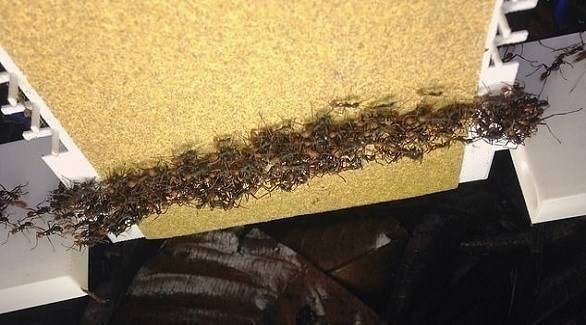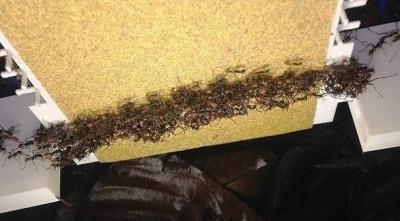Researchers say that understanding how to design complex ant architectures can help engineers develop self-healing materials and swarms of robots. There are over 200 different species of army ants, most of which are found in the rainforests of Central and South America. To navigate the forest floor, worker ants create "highways" and "bridges" with their bodies.
Researchers have discovered a new type of architecture in ant armies, which are living scaffolds that prevent ants carrying prey for the colony from slipping and falling if the pathway becomes too steep. An international team of entomologists studied the structures created by army ant colonies in Panama, redirecting foraging pathways onto a platform that could tilt up to 90 degrees horizontally.
The researchers state that any slope less than 40 degrees is unlikely to result in scaffold formation, according to their report this week published in the Proceedings of the National Academy of Sciences of the USA. The report notes that steep slopes led to larger and faster-growing structures.
Biologist Matthew Lutz, a co-lead author of the study, stated, "Scaffolds are also likely to form when many workers are moving heavy items from prey, and practically no ants fall as long as a scaffold is in place, even across vertical surfaces." Lutz added, "It is remarkable how quickly these structures form in response to disturbances when crossing inclines; it is truly a form of rapid, self-healing infrastructure."
Army ants are the largest on Earth, and each queen has the ability to lay several million eggs each month. Each ant measures only about a quarter to half an inch in size, but the colony's foraging trail can exceed 325 feet in length and 60 feet in width. Scientists are still unable to fully understand how ants build these super structures, and while they have a queen, there is no central authority when it comes to moving as a unit. If researchers can decipher the mechanism by which these structures are formed, it would represent a significant breakthrough in robotics and architecture, according to the Daily Mail.




